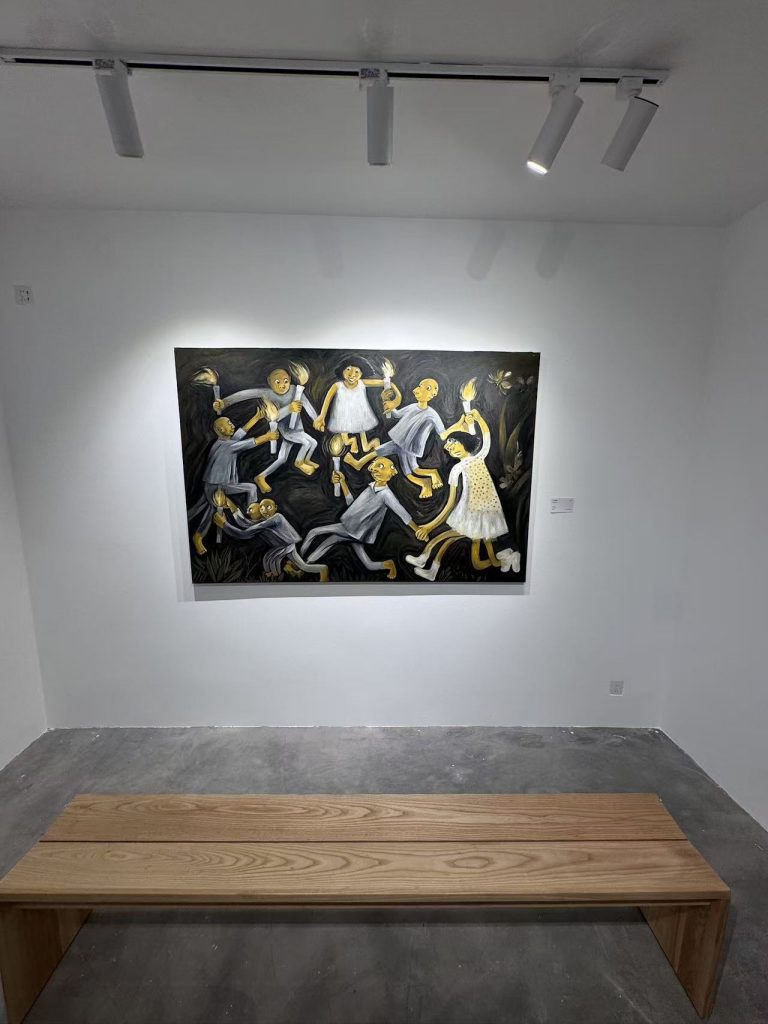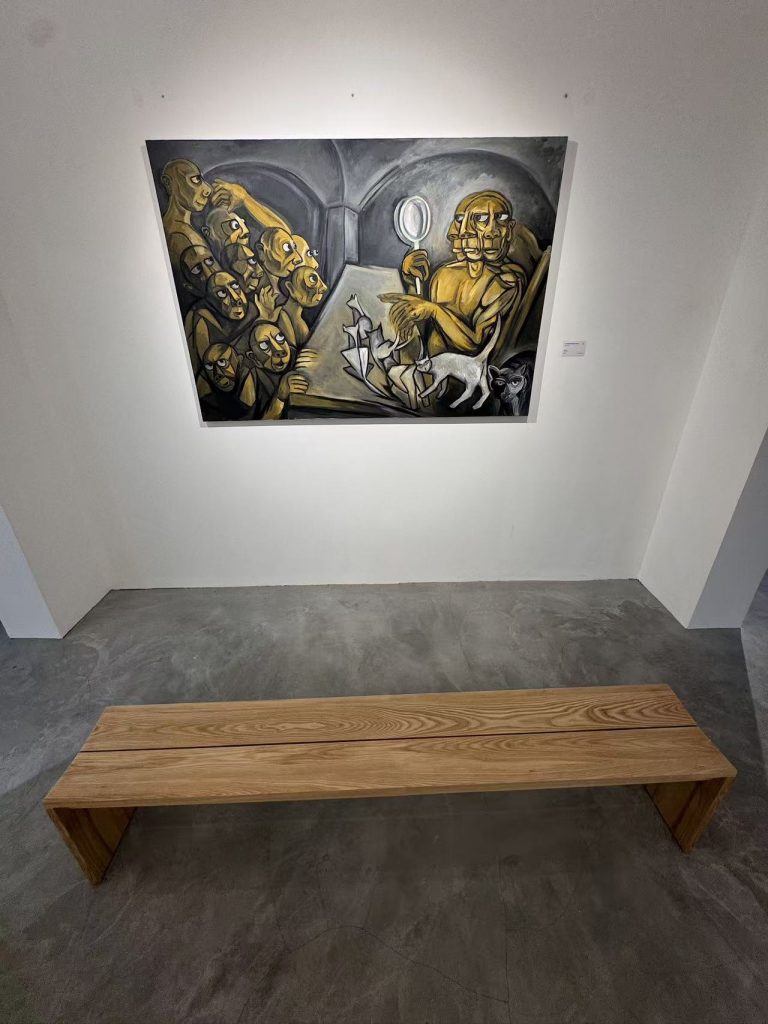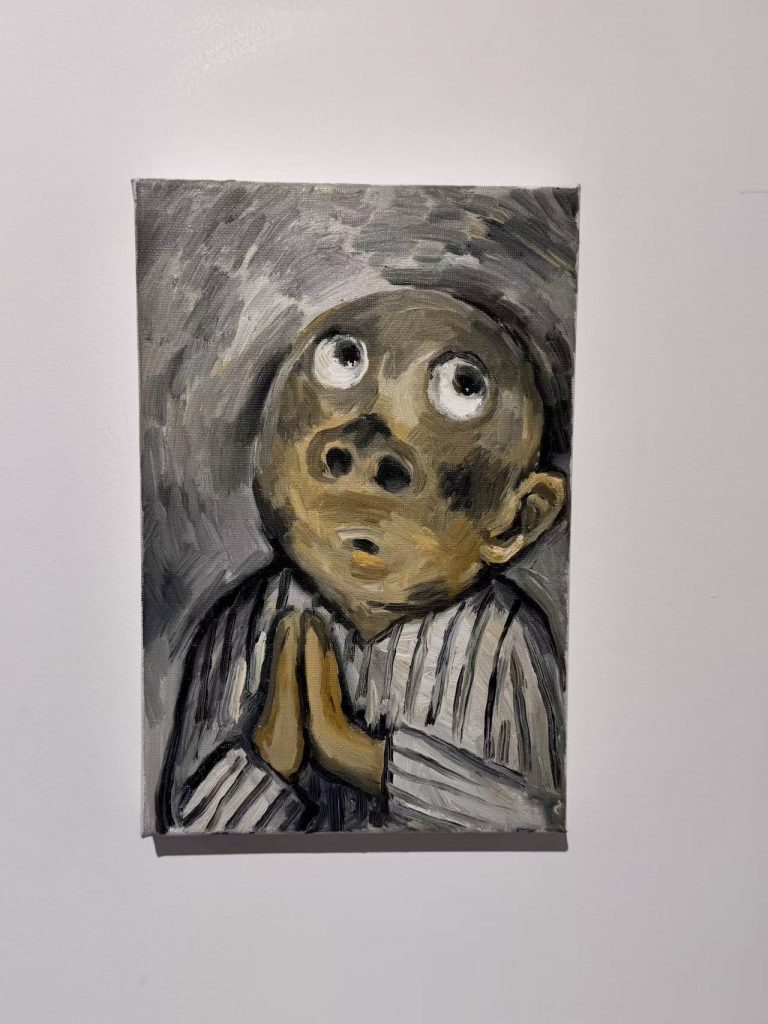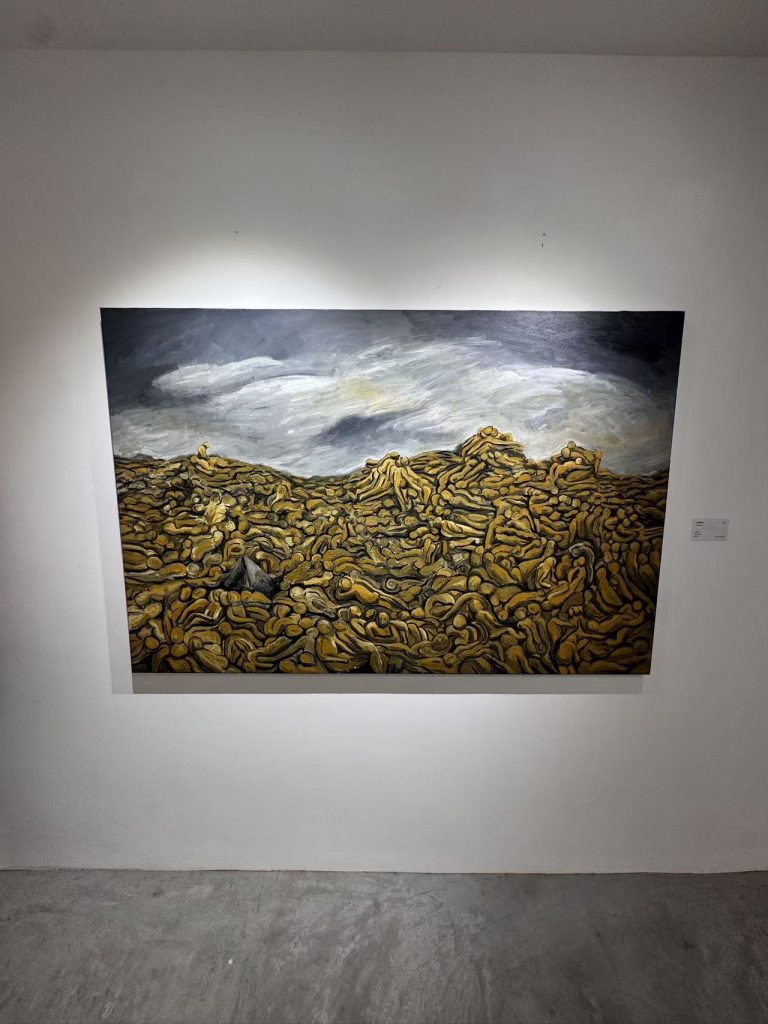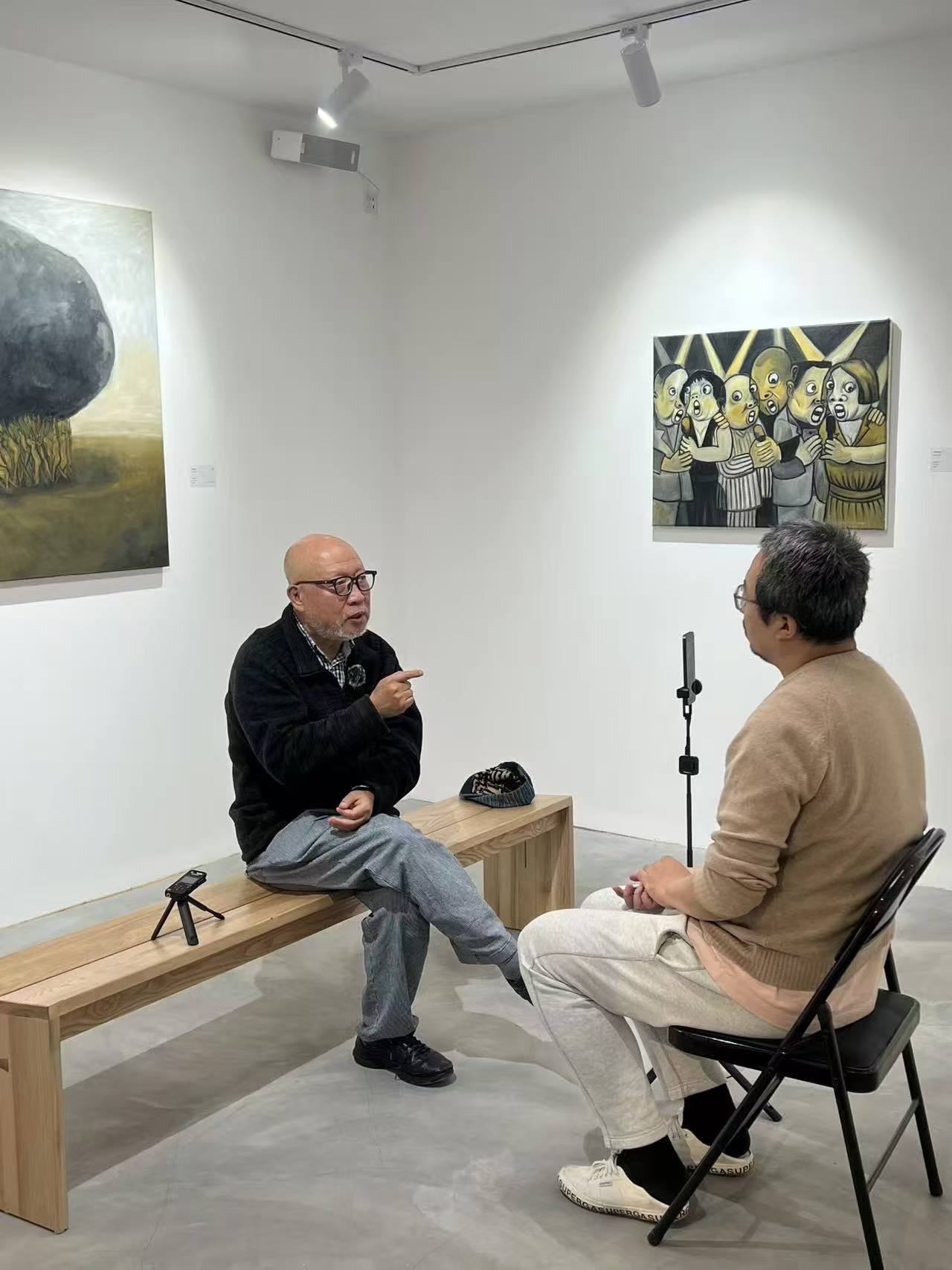Artist: Tutou Juren (Li Xiaoqiang)
Exhibition: Nov. 15 – Dec. 6, 2025
Venue: Faun Gallery, Chengdu
⸻
- Personal History Meets Art History
Tutou Juren—real name Li Xiaoqiang—has one of those life stories that naturally spills into his art. Born in 1963 in Tieling, educated at the Lu Xun Academy of Fine Arts, he’s lived through several major cultural shifts: the openness of the 1980s, the entrepreneurial chaos of the 1990s, the early-2000s blogging boom, and the visual-first world of today’s social media.
All these phases stack together, and you can feel them in his work.
His visual language—the exaggeration, the humor, the absurdity—didn’t come from following a school or movement. It came from living through multiple eras, each with its own contradictions.
As he puts it:
“I don’t match anything out there. I’m just me.”
Surprisingly simple, but it sums up exactly why his style is so hard to categorize.
⸻
- The Echoes of the ’85 New Wave
When Li was studying at Lu Xun Academy in the mid-80s, China’s art world was waking up. The ’85 New Wave was reshaping everything, and art students were suddenly exposed to ideas, images, and cultural references they’d never seen before.
He remembers that time as a period full of energy:
“Every day something new was happening. It felt like anything was possible.”
That sense of openness didn’t just shape his worldview—it planted the seed for the kind of self-driven expression that later became central to his work.
⸻
- Blogging: Where His Absurd Universe Began
Between 2003 and 2006, Li went through a difficult chapter—life stalled, family issues piled up, and he felt lost. So he turned to blogging. He wrote novels, essays, scripts—close to a million words in total.
Ironically, what brought him back to visual art wasn’t ambition, but a simple internet truth:
“Write 3,000 words, barely anyone reads it. Post a drawing, boom—hundreds of likes.”
It wasn’t about vanity; it was clarity. Images communicate fast. People connect instantly.
And from his blog doodles, the first versions of his now-iconic “Little Yellow Man” characters began to appear. What started as casual sketches slowly grew into a fully formed personal visual system.
⸻
- Why He Calls Himself “Absurdist”
Li’s “Absurdist” label isn’t a gimmick. It reflects how he processes the world. His characters are exaggerated, distorted, naive, cynical, humorous, and strangely honest.
Most importantly:
he always paints himself.
That choice matters. It means the humor and critique in his work never feel like he’s attacking someone else. The absurdity is a mirror, not a weapon. And because the “self” becomes a universal placeholder, his work opens up room for viewers to project their own interpretations.
⸻
- The Medium Shift: From Ink to Blogs to Oil Paint
Li’s career moves through clear media phases:
• early ink drawings → raw, impulsive expression
• blogging → narrative structure and storytelling
• oil painting → deeper emotional and visual complexity
He explains the change simply:
“Oil painting holds more. It carries the absurd better.”
Oil allows him to layer emotions, contradictions, and visual density in a way that ink or digital sketches couldn’t. His current practice feels like the fullest version of his inner world so far.
⸻
- Why So Many Characters Wear Hospital Gowns
If you look closely, a lot of his recent figures wear hospital outfits.
The reason? Surprisingly logical:
“Regular clothes make people think the painting’s about them. Hospital gowns make everything make sense.”
It’s funny, but it’s also real.
The hospital gown becomes a way to neutralize identity—everyone becomes vulnerable, strange, and strangely relatable. It also adds a layer of emotional truth: in a shifting, uncertain era, who hasn’t felt a bit like a patient waiting for something to make sense?
⸻
- An Artist Outside the Art-World Bubble
Li doesn’t live in Beijing or Shanghai, doesn’t “play the scene,” and doesn’t rely on relationship networks. In his words:
“This is a society built on connections. I just don’t play that game.”
His independence keeps his work raw, unfiltered, and free of the politics and trends that often shape contemporary art circles.
⸻
- The IP Question: Potential vs. Reality
Li’s visual system is incredibly consistent—and yes, extremely IP-ready. He knows this.
But he also knows how commercial IP really works:
“To build an IP, you don’t need two shovels. You need an excavator.”
To him, it’s not about printing T-shirts or toys. Real IP development takes real infrastructure: funding, branding, strategy, distribution. He’s open to collaboration, but he wants the right partner—one who can scale the world he’s built, not flatten it.
⸻
- Art as Attitude and Temperature
Li has a sharp eye for social issues, but he’s not confrontational. His stance is gentle but firm:
“We can’t change society. But we can express our attitude and our temperature.”
That “temperature” is crucial.
His work isn’t cold irony—it’s warm, human absurdity. The kind that tells you:
We’re all struggling. We’re all ridiculous.
And somehow, that’s what makes us real.
⸻
Closing:
Absurdity as a Way of Being**
At Faun Gallery, Li’s yellow-and-black figures, distorted faces, and drifting emotions create a world that feels both surreal and painfully honest.
He’s not following any movement.
He’s not trying to shock.
He’s not building a brand or chasing trends.
He’s simply expressing what it feels like to be a person living through shifting eras—and doing it with humor, self-reflection, and a stubborn commitment to authenticity.
In a time when images move fast and attention moves faster, Tutou Juren offers something rare:
a visual language that speaks directly, honestly, and with just the right amount of absurdity to make truth easier to face.
